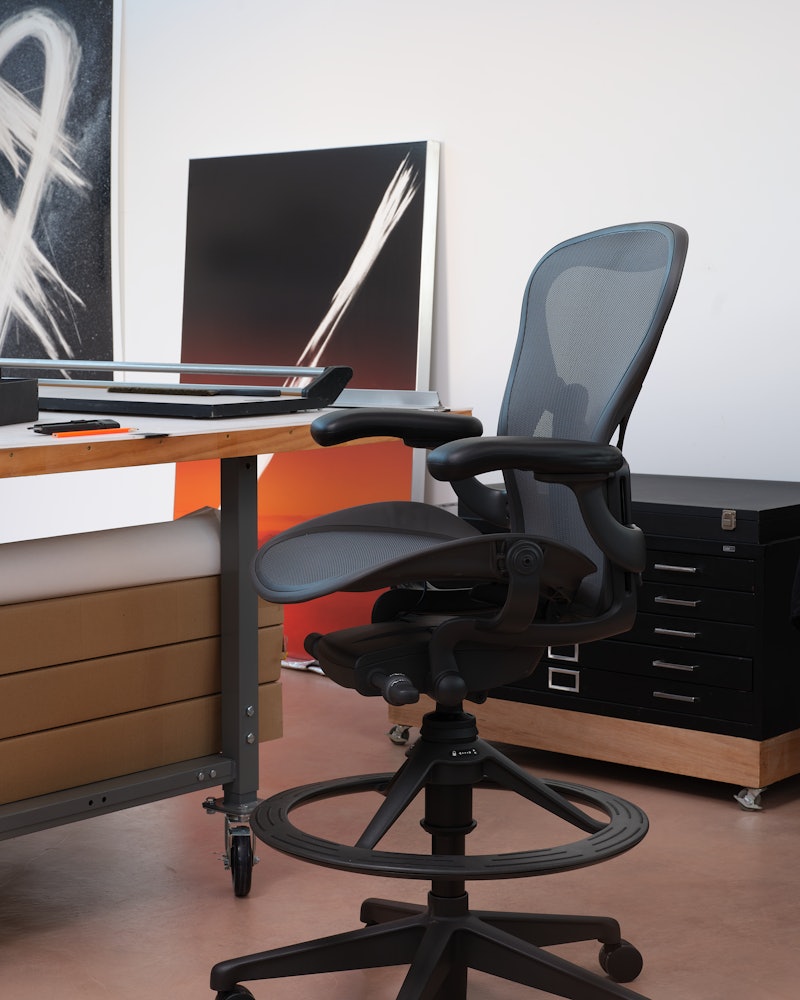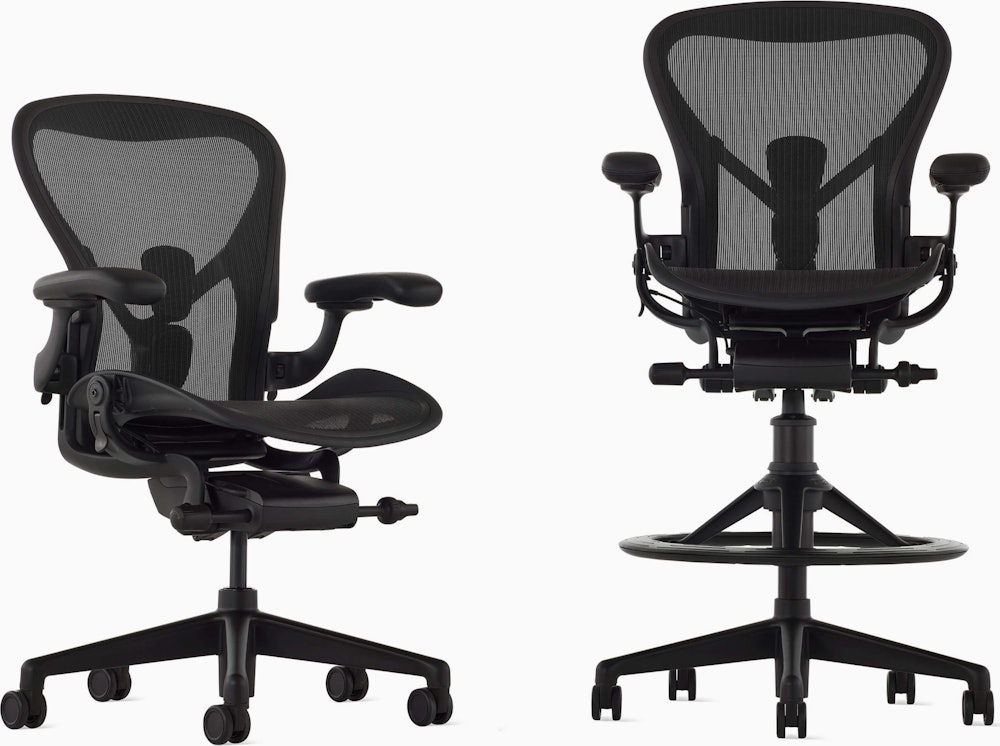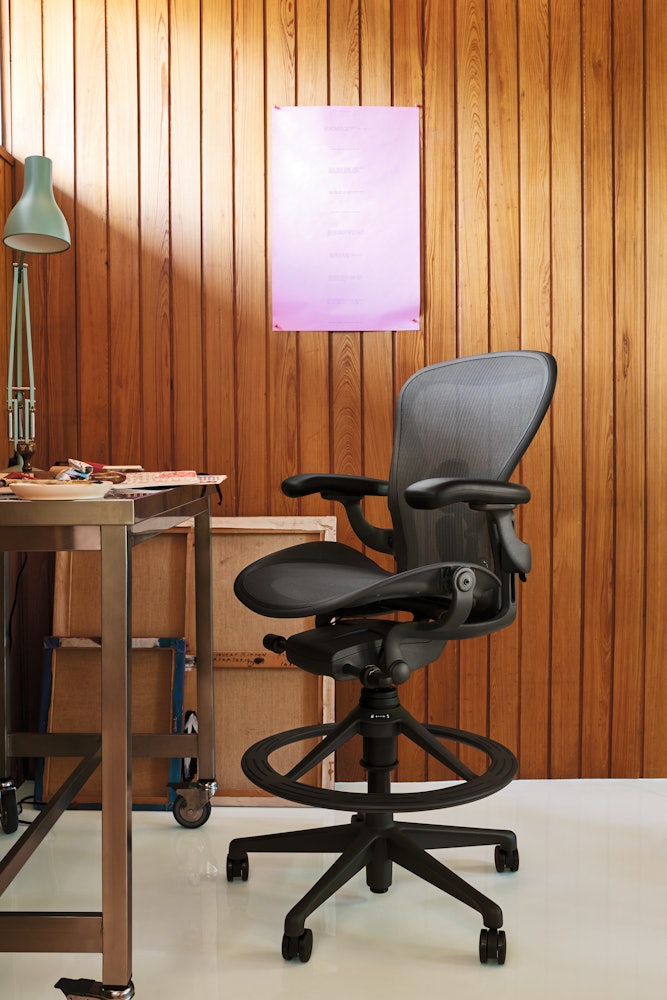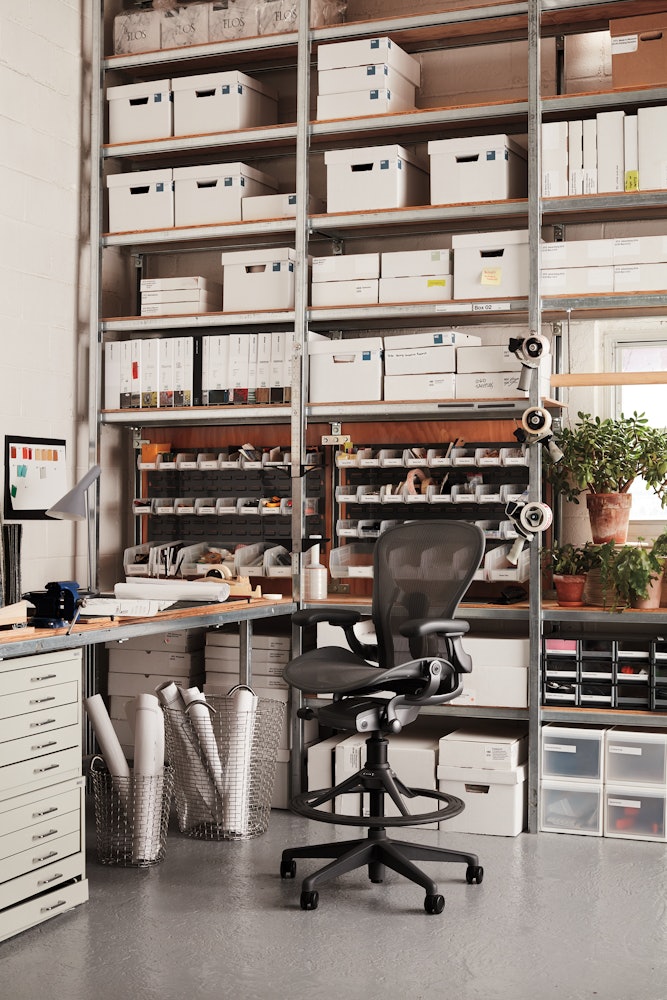Aeron Stool
Aeron Stool
Shipping + Delivery
Easy Returns
Not satisfied? Return items within 30 days. Learn More
Design Concierge
Need help designing your space? Learn more about our complimentary interior design services
Authenticity Guaranteed
This is an original, authenticated product.
Warranty
12-year warranty
Terms and conditions apply. Learn more
Details
- The perfect balance of ergonomics and comfort.
- You’ll sit naturally while also experiencing superior back support.
- Breathable suspension keeps you cool and comfortable.
- Height-adjustable footrest moves with the seat for comfortable extended sitting.
- Fully adjustable arms allow for height and angle changes.
- Measure for a perfect fit with our delivery guide: https://www.dwr.com/furniture-delivery-guide.html
BIFMA Level 3 certified and has also received the Indoor Advantage Gold certification, SCS Global Services' highest level of indoor air quality performance for furniture. The certification ensures that furniture products support a healthy indoor environment by meeting strict chemical emission limits for volatile organic compounds (VOCs).
- Brand
- Herman Miller
- Collection
- Aeron Collection
- General Dimensions
-
- 49¼" H 27" W 17" D
- Product Weight
- 50 lbs
- Assembly
- Comes fully assembled
- Warranty
-
12-year warranty
Terms and conditions apply. Learn more
- Lifestyle
-
- Eco-friendly

Counter Height
- Height Min (in): 45⅝
- Height (in): 49¼
- Width (in): 27
- Depth (in): 17
- Weight (lbs): 50
- Seat Height Min (in): 24¾
- Seat Height (in): 29¼
- Seat Width (in): 20¼
- Seat Depth (in): 17
- Weight Capacity (lbs): 350

Bar Height
- Height Min (in): 49
- Height (in): 54½
- Width (in): 27
- Depth (in): 17
- Weight (lbs): 70
- Seat Height Min (in): 28
- Seat Height (in): 34¼
- Seat Width (in): 20¼
- Seat Depth (in): 17
- Weight Capacity (lbs): 300
- Matte, polished, or powder-coated die-cast aluminum or polymer chassis and base
- 8Z Pellicle elastomeric suspension seat and backrest
- Harmonic™ 2 Tilt mechanism
- Adjustable back with PostureFit SL™ hardware or lumbar support
- Standard or leather-upholstered polyurethane foam arm pads
- Standard 2.5-inch carpet casters
- Notification of Filling Contents

Don Chadwick
Chairs are for sitting on. It sounds obvious, but there are designers who seem to miss that point. Not Don Chadwick, however, who has developed some of the best chairs on the market – including the Aeron Chair with Bill Stumpf – by emphasizing the body and the fact that bodies move.
More on Don Chadwick
Bill Stumpf
Bill Stumpf once said that he liked to collaborate with other designers the way a jazz trio improvises, playing together with no fixed destination. The approach requires complete attention, and you have to trust your instincts. Design should make room for spontaneity and discovery, said Stumpf, “blending the pleasure and pain of life into something wonderful.”
More on Bill StumpfWith regular care and maintenance, your Herman Miller product will provide many years of superior performance and satisfaction. To maintain quality, please follow the cleaning procedures outlined here.
The instructions for the care and maintenance of Herman Miller products are provided to you as a service. No warranty is implied since results may vary.
Aeron Care and Maintenance Guide
Aeron Adjustment Guide












